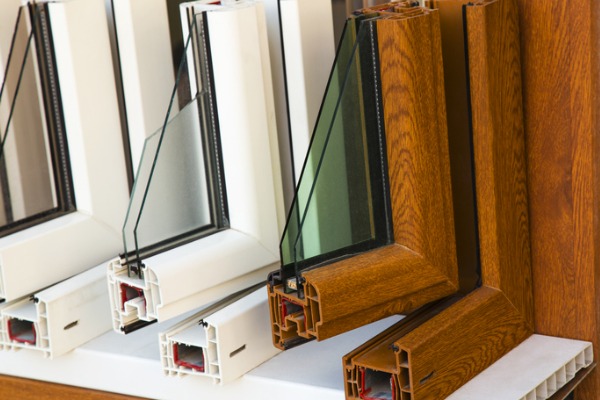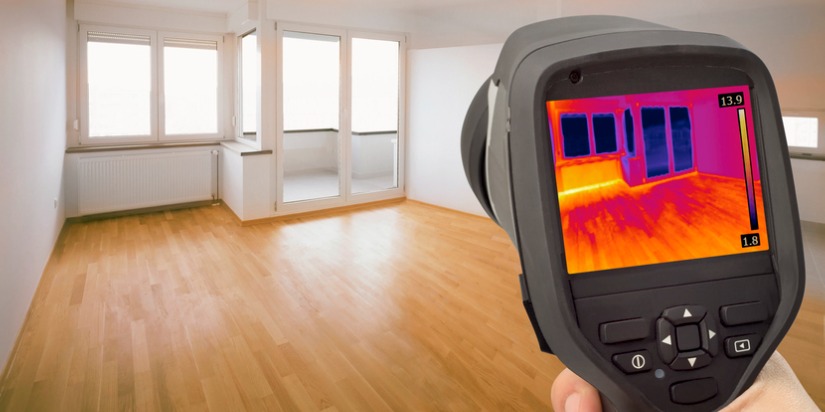We’re not going to sugarcoat it. The best energy-efficient windows are more expensive than regular windows. But that extra upfront cost is worth it because the windows will save you money and make your home more comfortable in the long run. Plus, high-quality energy-efficient windows often last much longer than cheaper options, giving you a lower yearly usage cost in the long term!
According to the U.S. Department of Energy, non-energy-efficient windows can account for as much as 25% of your energy bill by leaking heat in the winter or cool air in the summer. So, think about what could happen if you installed energy-saving windows that prevent that leakage. For example, your energy bill could go from $600 to $450, amounting to $1,800 in savings over the course of the year.
The money you save from the best insulating windows will add up over time, so they’ll likely pay for themselves in ten years or less!
The concept of energy efficiency may sound a little abstract and technical, but the good news is it’s not that complicated. Identifying the best energy-efficient windows is as simple as making sure the windows you choose have all these features:
- Double-pane glass
- Argon gas between the panes
- High-grade Low-E coating
- Energy Star and NFRC labels
- Low U-factor and solar heat gain coefficient
- Insulated vinyl window frames
- The same energy efficiency for all your windows
- Expert installation
- Excellent warranty
Below, we’ll take a closer look at why each of these features is important.

1. Double-Pane Glass Provides an Extra Layer of Protection
They say two heads are better than one. The same goes for the glass in your windows. A single pane of glass doesn’t provide much of a barrier against the elements. But two panes with a buffer space between them are much more effective at stopping outside air from getting in and energy from leaving your home.
But more isn’t always better.
See, while two panes are better than one, three panes aren’t better than two. Triple-pane windows add a third pane to the mix to provide even more insulation. But we don’t feel this third pane provides enough extra protection to justify the additional cost. Besides, the third pane can also reduce the window’s visibility and light transmittance.
The moral of the story? Two panes of glass should be plenty. Double-pane windows can help with temperature insulation and soundproofing, so they’re twice as nice if you live in a noisy area.
2. Argon Gas Improves a Window’s Insulation
As mentioned above, all double-pane windows have a buffer space between the two panes of glass. In the best energy-efficient windows, this space contains argon gas. This colorless and odorless inert gas does a fantastic job of keeping heat from escaping through the window.
Argon gas effectively prevents heat transfer because it weighs more than air. So, when hot air gets through either of the panes of glass in the window, the argon gas stops it in its tracks and pushes it back where it came from. In this way, the gas deflects the sun’s heat in the summer and keeps in the heat from your furnace in the winter.
Some window companies may try to convince you that you need a heavier gas than argon to insulate your windows more effectively. Don’t fall for this ploy to get you to spend more money. Argon gas is more than capable of providing the insulation you need for your home.
3. High-Grade, Low-E Coating Protects from the Sun
The other feature of the best energy-efficient windows is high-grade, low-emissivity (or Low-E) coatings. Low-E coatings are transparent films made of metal oxides that reflect heat off the glass but let natural light pass through.
The effectiveness of Low-E coatings varies depending on the types of metal oxides they’re made of. The best Low-E coatings are made of silver and have at least three layers of protection. According to Vitro Architectural Glass, triple-silver coatings allow as much as 70% of the sun’s natural light into a building while blocking 75% of its harmful energy.
Simply put, these characteristics will allow plenty of natural light into your home while blocking the heat and harmful UV rays associated with it. Oh, and all that natural light can help you save more on your home’s energy bills, too! To decrease energy usage, open the windows during the day and avoid using your overhead lights when possible.
4. Energy Star and NFRC Labels Indicate Trustworthiness
One of the easiest signs of quality to look for is Energy Star and NFRC labels. If a window has these stamps of approval, it means it’s passed the strictest tests for energy efficiency in the industry.
The Energy Star label signifies that the U.S. Environmental Protection Agency (EPA) has inspected the window and found that it meets or exceeds energy efficiency standards in your state. Thus, Energy Star-certified windows offer proven energy savings.
The National Fenestration Rating Council (NFRC) is a nonprofit organization that inspects and certifies windows. NFRC certification tests the whole window’s performance, while Energy Star only certifies the glass. So, NFRC certification is also essential when looking for the most energy-efficient windows.
5. The Lower the U-Factor and SHGC, the Better
You can pay attention to a couple of numbers when gauging how energy-efficient a window is: the U-factor and the Solar Heat Gain Coefficient (SHGC).
A window’s U-factor is the rate at which it allows heat to leave a home. A typical U-factor is between 0.20 and 1.20. The lower the number, the more energy-efficient a window is.
You also want to see a low number for the SHGC. This number measures how much solar heat a window lets into a home. A window’s total will be somewhere between 0 and 1, and the closer to 0 it is, the better.
NFRC-certified windows will have the U-factor and the SHGC listed on their labels.
6. Choose an Insulated Vinyl Frame Over Other Materials
The frame material can make or break the energy efficiency of a window since certain materials provide better insulation than others. On the worse end of the spectrum are metal and aluminum frames, which conduct hot and cool air into the home rather than keeping it out. Conversely, the best materials for window insulation are vinyl and wood.
Vinyl frames are great for insulation because they consist of interlocking chambers, which manufacturers can fill with insulation material. However, not all windows contain insulation, so you’ll want to ensure your windows do when purchasing them.
Wood window frames also provide a good amount of insulation. However, they don’t provide as much energy efficiency as insulated vinyl frames. Wood also requires more maintenance than vinyl since it decays more quickly over time. For this reason, we consider vinyl the ideal material for the best insulating windows.

7. Make Sure All Windows are Energy-Efficient
Customers sometimes ask if we recommend installing energy-efficient windows only in the areas of their homes most vulnerable to the sun. This way, they can have regular windows on the rest of their homes to save money. We always tell them it’s a bad idea.
While having a mix of energy-efficient and regular windows will save you upfront costs, it won’t give you the long-term results you want. After all, your home will still be vulnerable to energy leaking out of those regular windows.
A helpful illustration for this is to picture a Styrofoam cup with ten holes poked in it. If you plug three holes and pour water in, will the cup hold water?
In the same way, a home with ten windows and only three that are energy-efficient won’t keep your energy bills from rising. Therefore, we recommend installing energy-saving windows throughout your home.
8. Proper Installation Makes All the Difference
It won’t matter how high-quality your insulated windows are if they’re not installed properly. Each window needs to be cleanly mounted into a frame with low-expansion insulation applied around it. Otherwise, energy could leak out around the outside of the window.
To ensure this doesn’t happen, we recommend hiring an experienced professional to install your windows for you. This way, you’ll get the most out of your long-term investment in energy efficiency.
9. An Excellent Warranty Offers Extra Peace of Mind
While the warranty doesn’t affect a window’s actual energy efficiency, it does mean a lot when it comes to your purchase. A trustworthy window company shouldn’t just say its products are high-quality and energy-efficient. It should show that it stands behind its products 100%, and an excellent warranty is the best way for it to do that.
For example, at Your Window Solutions, we have a lifetime warranty on all our window installation projects. We stand behind our customized window solutions and want to give our customers extra peace of mind for unrivaled satisfaction.
Get the Best Energy-Efficient Windows Installed in Chicago
When it comes to the best energy-efficient windows, you get what you pay for. This extra investment is worth it for the money you save and the comfort you gain in the long run. Finding these high-efficiency windows is as easy as looking for a few specific features.
Do you need help finding the best energy-efficient windows for your home? At Your Window Solutions, we put your needs first to give you the beautiful, high-performance windows you need. We provide window replacement services in Lake in the Hills, McHenry County, and the Greater Chicago Region.
Editor’s Note: This blog was originally published in June 2022 and updated in March 2024.





